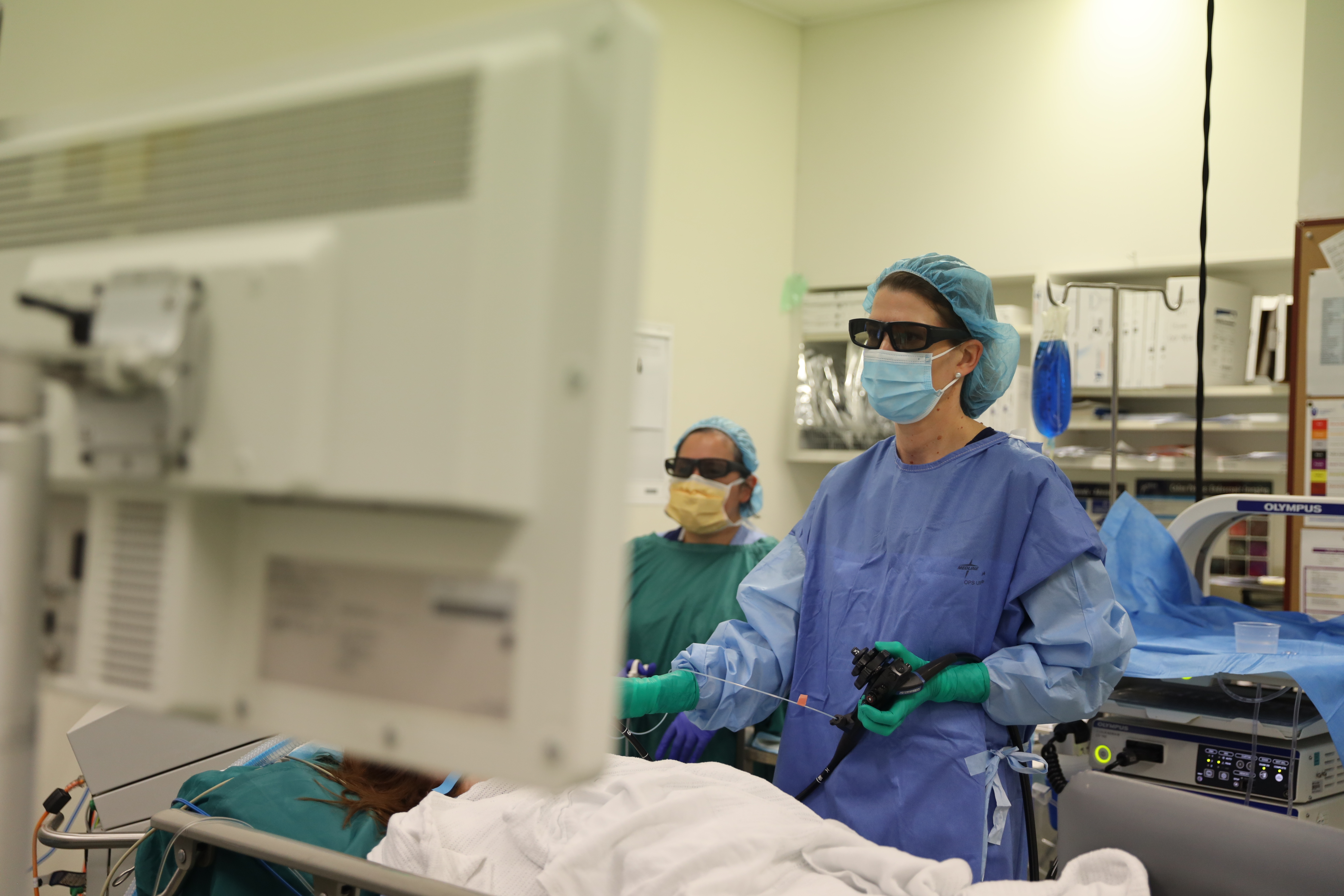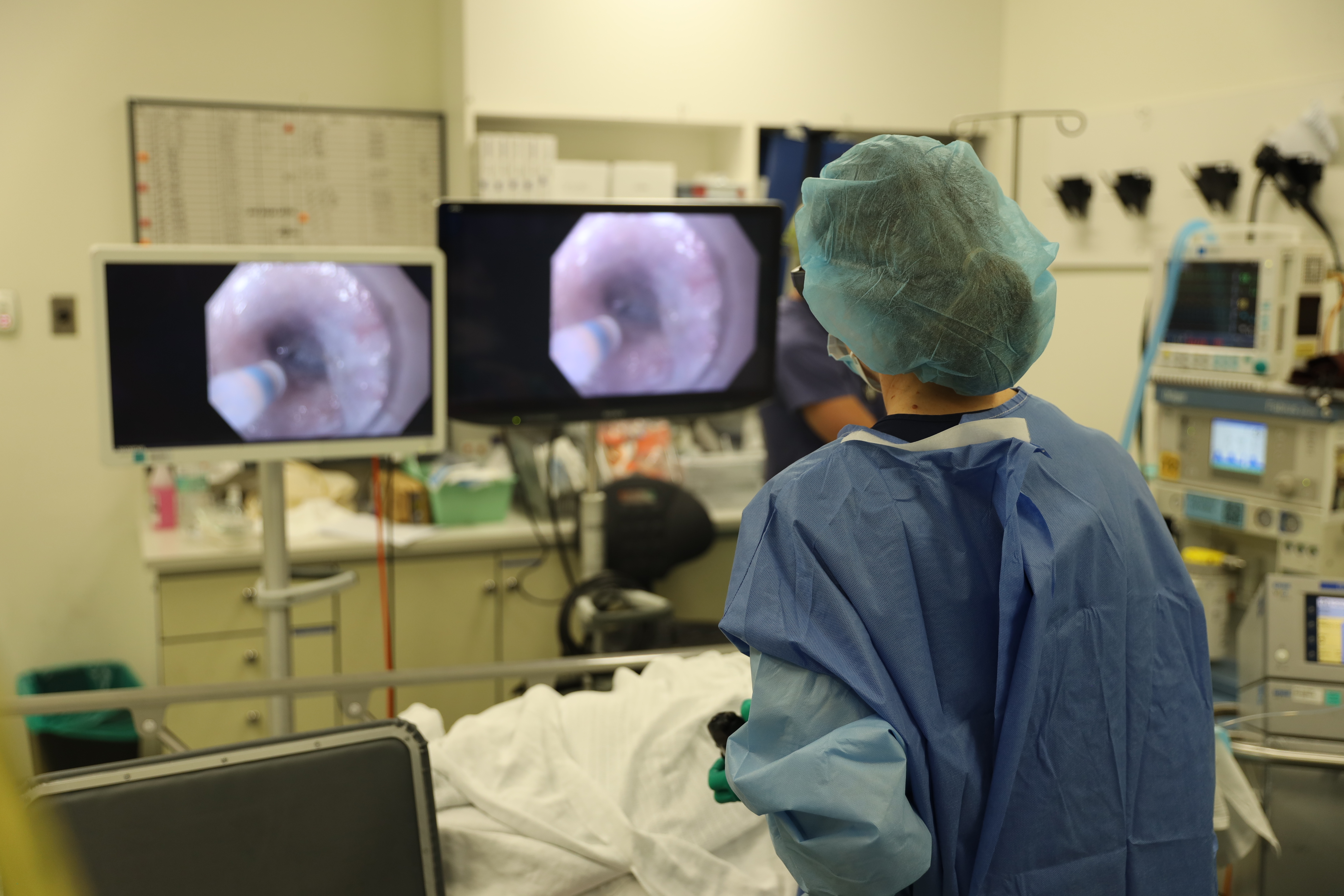World-first 3D POEM endoscopy performed at St Vincent’s Hospital Melbourne

Pictured: Associate Professor Bronte Holt performing the world's first 3D POEM.
The world’s first 3D Per Oral Endoscopic Myotomy (POEM) has been performed by St Vincent’s Gastroenterologist, Associate Professor Bronte Holt, and a team of specialised endoscopy nurses.
A POEM is a minimally invasive procedure used to treat achalasia, an oesophagus disorder that makes it difficult to swallow food and liquid. The procedure can help patients avoid more invasive surgeries.
The Darwin 3D endoscopic system, developed by MedicalTek and distributed in Australia by FutureMed Global, allows clinicians to use their 2D scopes but see a 3D image on a screen with the use of a 3D monitor and 3D glasses.
Associate Professor Bronte Holt, who performed the world-first procedure on 16 February 2024, is a gastroenterologist and interventional endoscopist at SVHM with expertise in the endoscopic diagnosis and treatment of diseases of the gastrointestinal and pancreaticobiliary systems.
“Using 3D imaging enhances the different layers of the gastrointestinal tract, as well as critical structures like the blood vessels and muscle fibres, and these details help us perform the operation with greater precision,” Associate Professor Holt said.
“Regular endoscopy is performed with 2D vision, which is the same as watching a video or looking at a photo; in comparison, 3D imaging is as though the operation is occurring right in front of you.”
SVHM is a major centre for advanced endoscopic procedures, performing complex, minimally invasive endoscopic procedures such as POEM, endoscopic resection, endoscopic ultrasounds and Endoscopic Retrograde Cholangiopancreatography.
“3D endoscopy can help train endoscopists in more complex endoscopic procedures such as POEM, because it gives a more realistic view of the tissue and different layers we operate within,” Associate Professor Holt said.
“This can help doctors learn advanced techniques faster and with more confidence.”
The Darwin 3D system includes a patented algorithm that can input 2D images and analyse the light reflection and refraction to display the image in 3D with depth perception.

Pictured: A/Prof Bronte Holt using 3D screens to perform an endoscopy.